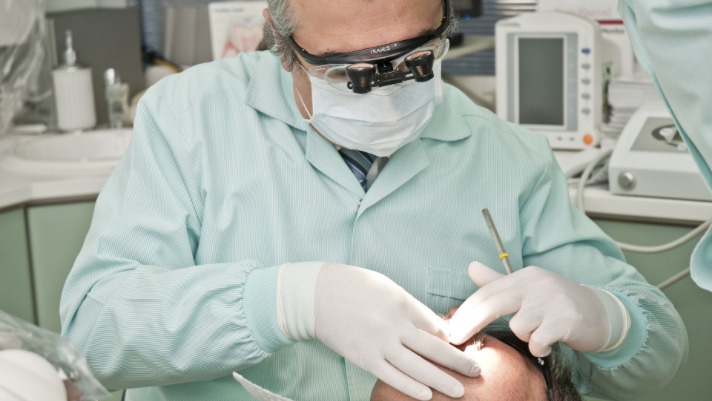
Everyone knows to see a dentist twice a year for a checkup and cleaning. But when should you see an orthodontist?
For those unfamiliar with the term, the word “orthodontic” originates from the Greek words for “straight” and “teeth.” However, orthodontists are qualified to do much more than just straighten teeth. Orthodontists also study the relationship between the teeth to the jaws and the relationship between the upper and lower jaws. Here are five reasons to see an orthodontist this year:
Dentist Referral
The most obvious situation in which you may need to see an orthodontist is when your dentist suggests it. Dentists have experience and training in recognizing orthodontic problems. Moreover, dentists get a unique view of your teeth and jaw when you have your annual dental X-rays. Reading these X-rays and performing an oral exam will tell your dentist whether or not you should see an orthodontist.
Orthodontists can treat a variety of conditions, including teeth that are too crowded or too far apart, teeth that are rotated in the socket, and crooked teeth. Although the appearance of these conditions may cause embarrassment, these conditions may also create discomfort or inhibit the functioning of your teeth. Your dentist can not only suggest that you see a local orthodontist: they may even be able to refer you to an orthodontist in San Mateo or an orthodontist in Half Moon Bay in which they are familiar and maintains a working relationship.
Age
It is a common misconception that orthodontists only treat adolescents. However, adults, as well as adolescents and children, can benefit from orthodontic treatment.
Although there is no upper age limit on who can benefit from an orthodontic consultation, the American Academy of Orthodontists (or AAO) recommends that a child have an orthodontic check-up at age 7. The reason is primarily proactive: an orthodontist can pick up on any developmental issues that may cause problems in the future, such as crowded teeth, early or late loss of baby teeth, or thumb sucking. While the AAO recommends the first appointment take place around age 7, many children do not get braces until they are between the ages of 10 and 14 when their permanent teeth come in. Once it is time for braces, there are many options, including traditional braces and Invisalign braces.
Misaligned Bite and Crooked Teeth
When the upper jaw protrudes past the lower jaw, it is called an overbite. When the lower jaw protrudes past the upper jaw, it is called an underbite. Either misalignment can cause pain or discomfort. Moreover, a misaligned bite can interfere with chewing or speaking. In addition to functional problems, a misaligned bite can also affect a person’s appearance. A Half Moon Bay or San Mateo orthodontist can advise you on whether your bite is misaligned.
Crooked teeth, crowded teeth, or gap teeth can also be corrected with orthodontic treatment. Again, misaligned or mis-spaced teeth can cause problems with chewing as well as create discomfort or pain. Additionally, people with crooked teeth can feel self-conscious about their appearance. Orthodontists can address problems with the alignment or spacing of teeth to give you a comfortable smile that you love.
Clenched Teeth
People who clench or grind their teeth can suffer from problems with their teeth and jaw. The clenching or grinding action can loosen teeth and cause them to shift in the jaw. Moreover, the jaw joint can suffer pain or wear as a result of clenching or grinding.
Separate from grinding or clenching, some people may experience pain, clicking, or looseness in the jaw. Jaw problems can have many causes, including malformation of the jaw or injury to the jaw. These problems with the jaw may also be reasons to seek an orthodontic consultation.
Sleep Apnea
Sleep apnea occurs when difficulty breathing causes a drop in oxygen levels while sleeping. Sleep apnea can cause sleeplessness, snoring, and, in the worst case, heart attack. Sleep apnea may have many causes, including the position of the jaw while sleeping. Orthodontists can create appliances that hold the jaw in the correct position to reduce the incidence of sleep apnea, thereby avoiding the need for a CPAP machine.
Are you ready to visit an orthodontist you can trust? Rely on Alborzi Orthodontics for more information today.